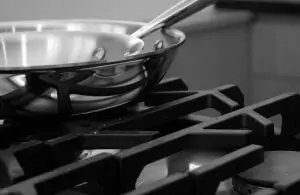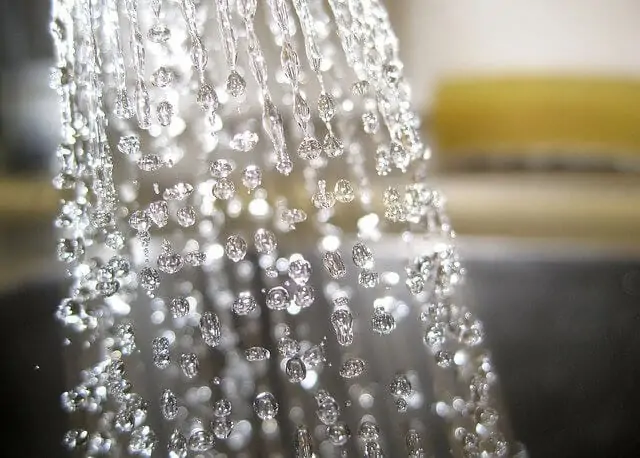
Along with cast iron, stainless steel is one of the most durable materials to cook with it. It is capable of withstanding the heat that most other pans can’t handle. Because of this, stainless steel has proven time and time again to be a go-to material for a myriad of different recipes.
But maybe you’re wondering: “What’s the best way to clean All-Clad?” I’ll give you the steps below. But first:
What is All-Clad stainless steel?
If you come across anything that says All-Clad stainless steel when shopping for kitchen supplies, then you know one thing with certainty: That item is a high-end, high-quality product that will last you many years, provided you take good care of it.
But what makes All-Clad so special? It’s made from a very high-quality strain of stainless steel, affectionately known as “18/10”. You are probably wondering what that means right? I’ll tell you. 18/10 is the relation of nickel to chromium in the product. 18 is the number that depicts its anti rusting properties, and the “10” is the amount of nickel content.
The higher this number, the higher the nickel content. So if you had a stainless steel pan with the properties of “18/0”, that means there is no nickel in the product. What that means is that it will not maintain its shininess over the course of time.
But even if you have an “18/10” you have got to maintain your pan if you want to get the most use out of it. Which begs the question:
How do you clean stainless steel cookware?
I use to have this question as well, luckily, the answer is rather simple, although there are a few steps to it. I’ll go into each step in detail, but here’s the basic outline:
- Heat the pan
- Use a paper towel to wipe away any loose grease, dirt, or grime
- Get hot water
- Pour the water into the pan and use a wooden spatula to scrape the food off
- Sprinkle Bar Keepers Friend (BFK) on the pan
- Use a wet cloth to scrub the BFK into the pan
- Rinse with more hot water
- Repeat steps five through seven if necessary
If your pan is scorched, you’ll use a slightly different method.
Step one – heat
Heating the pan is important because it lets you get off all the loose stuff off
Step two – wipe
Using a paper towel to remove the grease or anything else that can be easily removed makes sure that you don’t get left over food or anything else stuck to the pan when it heats up.
Step three – add hot water
Only use hot water. This is of vital importance because using cold water on a hot stainless steel pan could potentially warp the metal. If this happens too often, the pan will not distribute heat properly.
Step four – scrape
Once you pour the water into the pan use a wooden spatula to scrape off as much gunk as you can. It is OK to use stainless steel for this, but I think wood will do the job better because it won’t scratch the surface. Plus I don’t want my stainless steel utensils losing their shine.
Thinking about adding another piece to your All-Clad collection?
I like this sauce pan from Amazon.
Step five – add BKF
Bar Keepers Friend (Amazon) is a chef’s best friend, especially if that chef uses stainless steel. This stuff will restore the shine to your pan without you having to worry about using all of your strength to scrub it off. I would recommend getting the powder. They do make a liquid version of this stuff, but it is not nearly as abrasive as the powder. For that reason, it doesn’t work nearly as well.
Step six – scrub
When cleaning stainless steel, you do not want to use an abrasive brush because they tend to leave scratches on the pan’s surface. This will cause food to stick to the pan more over a period. Make sure you only use cloth (Amazon).
Step seven – rinse
Rinse the stuff off with hot water afterward.
If these steps didn’t work, you could repeat steps five through seven as many times as necessary. When you have finally gotten the shine restored to the pan, you can wash with lukewarm water and a very mild detergent to finish the cleaning process.

Now that your pan’s clean, where you gonna dry it?
I recommend this bamboo rack from Amazon.
Things to avoid
You want to make sure you do not wash this with soap that has any acidic properties to it. The reason for that is because the acid in some dish soaps will eat away at the pan and begin to cause corrosion.
You should also refrain from washing with soap and water while the pan is still hot. When the pan is hot, you want only to use hot water to clean it. Not only will it help to get food that is stuck on the pan off, but it will also keep the pan from warping and beginning to distribute heat improperly.
Using abrasive brushes is bad for stainless steel because it scratches the surface and causes the pan to lose its nonstick qualities.
I talk about the sponges I like
for cleaning stainless.
Wrap up
Stainless steel is by far my favorite cookware. It is durable as heck. Its versatility is only outdone by cast iron. And it makes meals taste as good as they possibly can. If you treat these right, they will be around for decades, and that more than makes up for the cost you pay upfront.
Additional Resources





Alexis DeAnda is a food fanatic, library card user, and cast iron hunter, in that order. She has been cooking for anyone that will taste it ever since her mom let her make doughnuts on Saturday mornings at the age of 7.